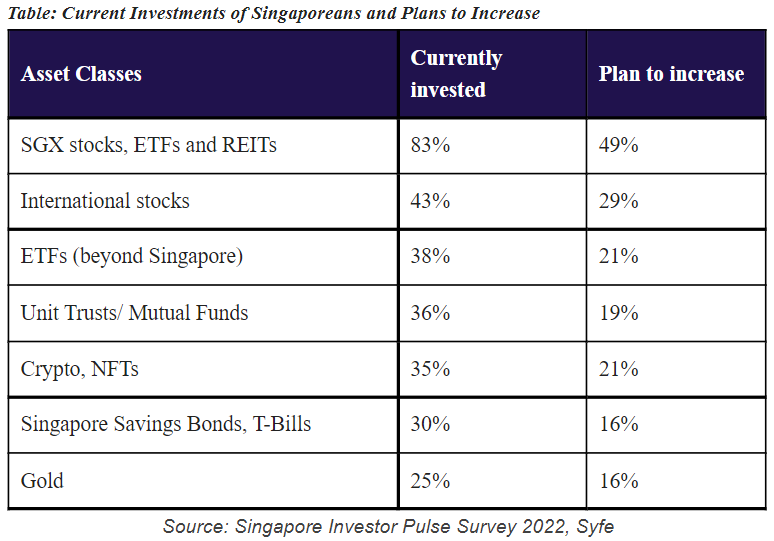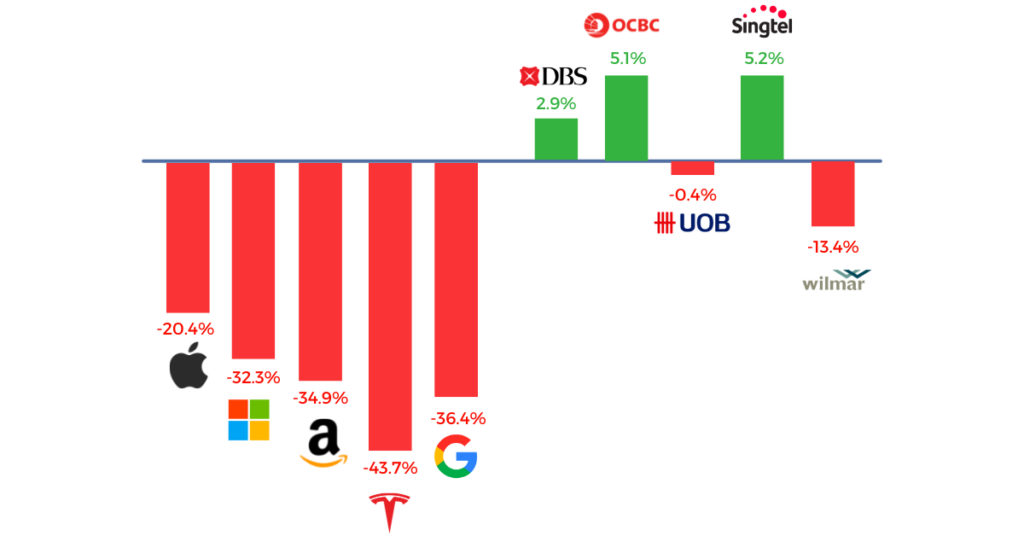#whatstrending feat. Syfe was first published on SGX

Ever wondered what is currently driving the local and regional markets? #whatstrending is a new series addressing some of the most trending questions/topics on the markets for investors. Designed to be educational, expect to get factual information on what is driving sectors and stocks listed on SGX, featuring insights from professionals in the community.
Today, we hear more from Syfe, a digital wealth platform now offering Singapore-listed stocks. Samantha Horton, Chief Business Officer, shares her thoughts on market developments.
Q: With the recent market volatility and rate hikes, what have you observed in terms of investor trends?
From Samantha Horton, Chief Business Officer:
Individual investors tend to turn towards more familiar local stocks during times of increased volatility.
Intuitively, this makes sense as local investors are able to more easily have access to data points and earnings information on Singapore companies operating in their homeground – for example policy shifts, or have malls added new tenants, are restaurants full, how easy it is to book a table at restaurants on weekends, the chatter about how expensive traveling is getting. These inform investors on how a company is faring and how much potential pricing power they have, in addition to gauging broader economic momentum.
Looking at investor flow data from SGX, retail investors have poured assets into Singapore-listed stocks with Financial Services, REITs and Technology gaining the most net inflows.

Creating a globally diversified portfolio
Singapore, being an export-led and open economy, would be tied to the business cycles of the largest economies of the world and the global macroeconomic environment. However, looking at financial markets data, there are still diversification benefits for investors looking to add Singapore-listed stocks to their US-heavy holdings and vice versa.
Over the last one and two years, correlation between STI and S&P 500 has been low (<0.2). So far this year, Singapore stocks have provided better downside protection in comparison during this period of drawdown. Over a longer time period, 3 years and 5 years, the correlation increases to 0.6-0.7 as equities globally have had a good run.
Just like how sports teams tend to perform better for home games as compared to away games, homeground advantage in investing exists too!
Looking at World Cup victories, teams from Uruguay, Italy, England, Germany, Argentina, France won when the tournament was held at home. The 2014 World Cup was especially heartbreaking for Brazil though!
This phenomenon of “winning at home” is supported by academic research too: several authors including Feng and Seasholes (2004), Ivkovic and Weisbenner (2005), Massa and Simonov (2006), and Bodnaruk (2009) lend some support for the theory that individual investors’ domestic holdings outperform their international ones. Liao et al. (2012) goes further to show that investors not only prefer stocks with regionally close headquarters but also stocks that are listed locally.
Flight to familiarity showing up in numbers
The “flight to familiarity” theme shows up in Syfe’s “Singapore Investor Pulse Survey 2022” too. The survey gathered the views of over 1,000 Singaporeans who have indicated an interest in investing, across the ages of 18 to 55 with a special focus on perceptions and investing intent in relation to the Singapore market, as well as existing barriers.
Singapore-listed stocks, ETFs and REITs are the leading areas (Table below) where Singaporeans who currently invest, are investing in, and 49% plan to maintain or increase their exposure.
This signals a strong homeground appeal among Singaporean investors. STI returned positive gains of 3.80% as of end-September 2022 as compared to the global benchmark of MSCI World Index with a 21.60% drop in the same period.

Looking at the YTD returns of the 5 largest stocks in S&P 500 versus the STI, investors invested into the 5 largest STI stocks would have a more resilient return of -0.12% versus the 33.5% declines averaging across S&P 500’s 5 largest stocks.

For more Syfe Research, visit www.syfe.com.



You must be logged in to post a comment.